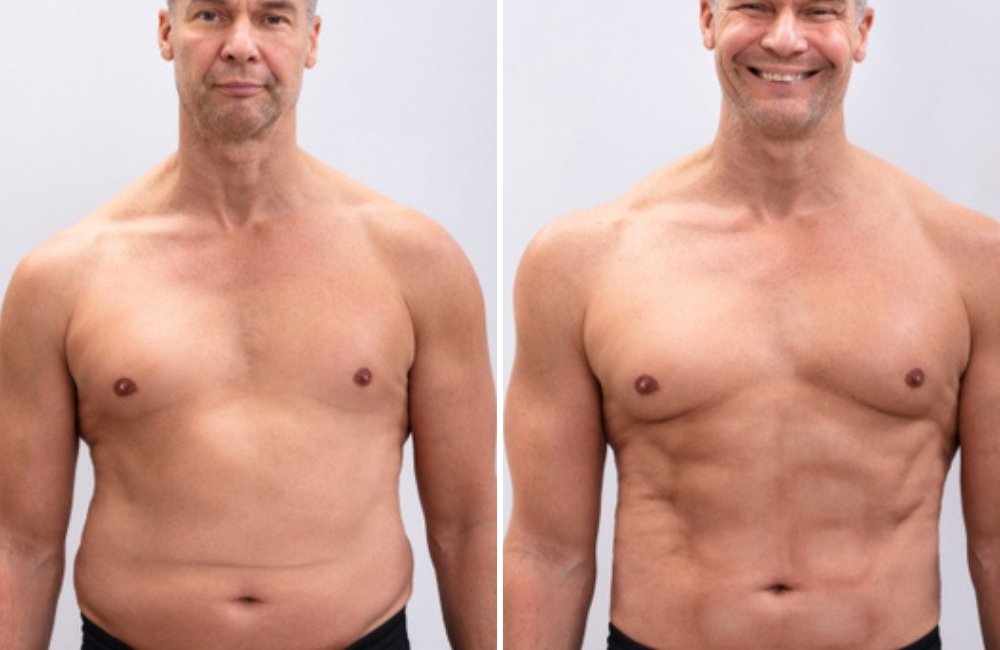How To Lose Belly And Chest Fat Male

Losing fat around the abdomen and chest is a common goal for many men. While spot reduction is a myth, understanding the science-backed strategies for overall fat loss can help achieve a leaner physique. This article explores effective methods for reducing body fat, with a focus on lifestyle modifications rather than quick fixes.
The key to reducing belly and chest fat lies in creating a calorie deficit through a combination of diet and exercise. This involves consuming fewer calories than the body expends, forcing it to tap into stored fat for energy. A balanced approach, incorporating both cardiovascular exercise and strength training, is crucial for sustainable results.
Dietary Strategies for Fat Loss
Diet plays a significant role in weight management. Focusing on whole, unprocessed foods is a fundamental step. This includes lean proteins, fruits, vegetables, and whole grains, which are nutrient-dense and help promote satiety.
Limiting processed foods, sugary drinks, and excessive saturated and trans fats is equally important. These foods are often high in calories and low in nutritional value, contributing to weight gain.
Portion control is another key aspect of dietary management. Using smaller plates and being mindful of serving sizes can help regulate calorie intake. Tracking your food intake with a food journal or app can provide valuable insights into your eating habits and help you identify areas for improvement.
Macronutrient Balance
The balance of macronutrients (proteins, carbohydrates, and fats) in your diet can also influence fat loss. A diet relatively higher in protein can help preserve muscle mass during weight loss.
Complex carbohydrates, such as whole grains and vegetables, provide sustained energy and fiber, promoting satiety. Healthy fats, such as those found in avocados and nuts, are essential for hormone production and overall health, but should be consumed in moderation.
Exercise for Burning Fat and Building Muscle
Regular exercise is essential for burning calories and building muscle mass. Cardiovascular exercise, such as running, swimming, or cycling, is effective for burning calories and improving cardiovascular health. Aim for at least 150 minutes of moderate-intensity or 75 minutes of vigorous-intensity aerobic activity per week, as recommended by the American Heart Association.
Strength training is equally important for building muscle mass. Muscle tissue burns more calories at rest than fat tissue, which can help boost your metabolism and make it easier to lose weight. Focus on compound exercises that work multiple muscle groups simultaneously, such as squats, deadlifts, bench presses, and rows.
Incorporate strength training exercises 2-3 times per week, allowing adequate rest between workouts for muscle recovery.
High-Intensity Interval Training (HIIT)
HIIT involves short bursts of intense exercise followed by brief recovery periods. This type of training can be particularly effective for burning calories and improving cardiovascular fitness in a shorter amount of time compared to traditional steady-state cardio.
Lifestyle Factors for Success
Beyond diet and exercise, other lifestyle factors can significantly impact fat loss. Adequate sleep is crucial for hormone regulation and overall health. Lack of sleep can disrupt hormones that control hunger and satiety, leading to increased appetite and weight gain.
Managing stress is also important, as chronic stress can lead to increased cortisol levels, which can promote fat storage, particularly in the abdominal area. Find healthy ways to manage stress, such as meditation, yoga, or spending time in nature.
Hydration is often overlooked, but it is essential for overall health and weight management. Drinking plenty of water throughout the day can help boost metabolism and promote satiety.
Losing belly and chest fat requires a consistent and sustainable approach. Focus on creating a calorie deficit through a balanced diet and regular exercise. Prioritize whole, unprocessed foods, engage in both cardiovascular and strength training exercises, and manage stress and sleep for optimal results. Remember that sustainable fat loss takes time and patience.
Consulting with a healthcare professional or registered dietitian can provide personalized guidance and support to help you achieve your goals safely and effectively.


















